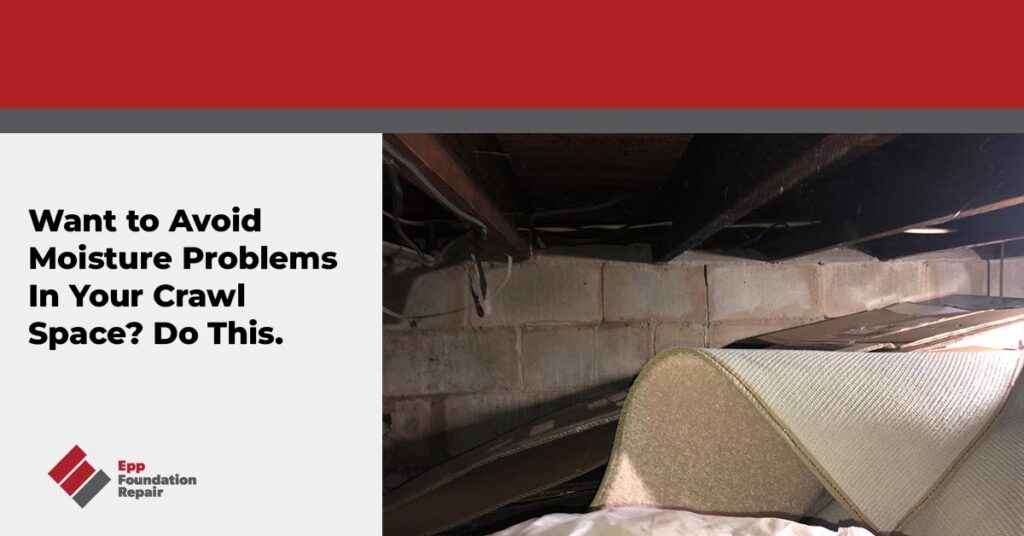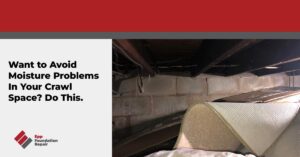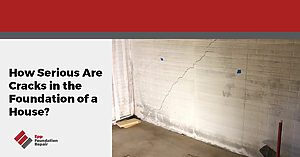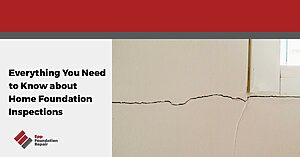Worried about your crawl space’s humidity level? If so, don’t hit that back button because you’ve landed on the right page. In this article, we’re going to talk about the correct humidity level for a crawl space, why excess humidity is bad for a crawl space, how crawl spaces get wet, repair solutions for a damp crawl space, and more.
No homeowner wants a damp, soggy crawl space. The good news is that excess crawl space moisture can be a distant memory with the right solution. In this article, we’re going to give you proven strategies for keeping your home’s crawl space clean and dry. Read on to find out why these effective waterproofing methods can protect your crawlspace from moisture-related trouble.
What Is An Appropriate Crawl Space Humidity Level?
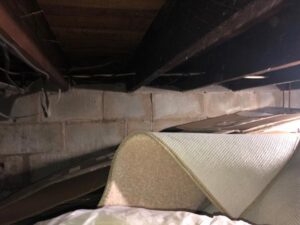
Maintaining the appropriate crawl space humidity level is crucial for preventing moisture-related problems. We recommended keeping the humidity level between 30 and 50 percent to avoid condensation, mold growth, and wood rot. A crawl space that’s too damp can also attract wood-eating pests like termites.
To achieve a crawl space humidity level between 30 and 50%, you’ll need to spend some money upfront. However, maintaining the proper humidity level in your crawl space can save you from shelling out thousands of dollars on costly repairs in the future. It will also keep your home healthy and safe.
Why You Don’t Want Excess Humidity In A Crawl Space
It may not seem like a big deal, but a high crawl space humidity level can cause serious problems. For starters, it can lead to mold growth, which can damage the wooden structures in the crawl space and affect the air quality in your home because a percentage of air from the crawl space flows into your home’s living area. In other words, if your crawl space is full of mold, the air inside your home will be as well.
Yuck!
High humidity in the crawl space can also cause wood rot, weakening your home’s structure over time. And if that wasn’t enough, excess moisture can also attract wood-eating pests, such as termites and rodents. Before you know it, you could face repairs costing thousands of dollars. So, if you haven’t already, it’s essential to reduce the humidity level in your crawl space and avoid these potential issues.
Why Do Crawl Spaces Get Wet?
Crawl spaces get wet for various reasons, including the following:
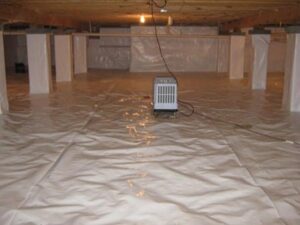
- Poor drainage around the foundation – This is one of the main reasons for soggy crawl spaces.
- Leaking pipes – Leaky pipes will create excess moisture in the crawl space. A leaky water heater can also be a source of moisture.
- Your yard isn’t properly graded – If the land around your home slopes toward the foundation, groundwater will drain toward the foundation and, from there, seep into the crawl space.
- Open vents – Open vents allow warm, humid air to enter the crawl space and condense on cooler surfaces.
Whatever the cause, it’s important to address wet crawl spaces quickly to prevent mold growth and other problems down the line.
The Three-Step Solution To A Wet Crawl Space
As we’ve just explained, excess moisture in a crawl space is more than just a nuisance; it can lead to serious issues like mold growth, wood rot, and structural damage. Fortunately, there is a solution to this problem.
A drain tile system, crawl space encapsulation, and a dehumidifier
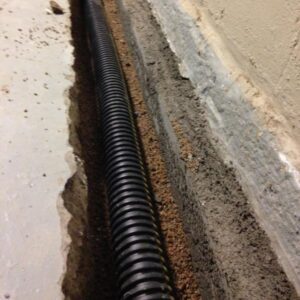
When it comes to crawl space waterproofing, nothing beats a drain tile system. It’s a gold standard, and for a good reason. Instead of merely putting up a barrier to keep water out, a drain tile system prevents moisture from building up in the soil in the first place.
There are two types of drain tile systems: exterior and interior. An exterior drain tile system is installed around the outside perimeter of a home’s foundation at the footing level. An interior drain tile system is installed around the inside perimeter of a basement or crawl space. Both systems channel excess moisture in the soil toward a sump pit, where it’s then ejected away from the foundation via a sump pump.
The general installation procedure for an exterior drain tile system is as follows:
- The soil around the perimeter of the foundation is excavated down to the footing.
- A shallow trench is dug around the foundation perimeter and lined with gravel.
- A perforated drainage pipe is placed into the trench and covered with more gravel.
- Finally, the excavated soil is replaced.
Now, excess moisture in the soil finds its way into the drainage pipe and gets channeled toward the sump pit. Once the pit fills with water, a sump pump kicks in and expels the water away from the foundation.
The next step involves encapsulating the crawl space with a thick, vapor-retarding barrier. The vents are sealed, and the vapor barrier is placed over the crawl space walls and floor. For more information, see Are There Any Negatives To Crawl Space Encapsulation?
The final step is installing a dehumidifier in the crawl space to ensure the humidity level remains low. This three-step solution will keep your crawl space dry and prevent potentially costly damage to your home.
For more information, see Is crawl space encapsulation worth it.
Other Things You Can Do To Help Keep Your Crawl Space Dry
If you want to keep your crawl space dry, you can do a few other things as well. These include the following:
- Regrade your yard, if necessary, so it slopes away from the foundation. This will prevent groundwater from draining toward the crawl space.
- Consider relocating any water-hungry shrubs or flowers planted next to the house.
- Use downspout extensions to carry water away from the foundation.
- Clean your gutters regularly so water doesn’t spill over the side of your house, and soak the ground around the foundation
.
If you have moisture issues in your home’s crawl space, contact us today to schedule a crawl space evaluation and receive a repair estimate. Since 1994, we’ve helped clients in Lincoln, Kearney, Omaha, Southeastern Nebraska, Northwestern Missouri, and parts of Northeastern Kansas with foundation repair, basement waterproofing, crawl space encapsulation, and concrete leveling for their homes.

